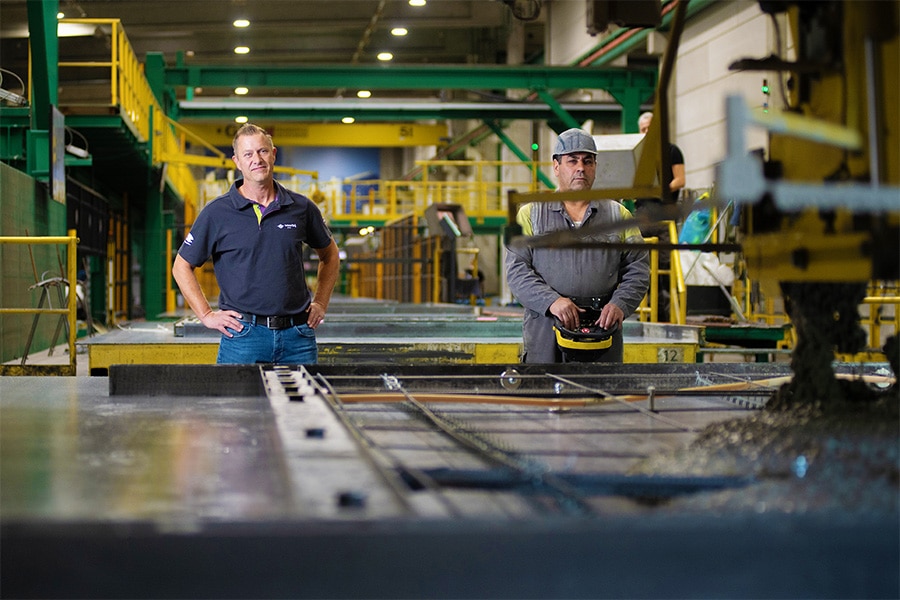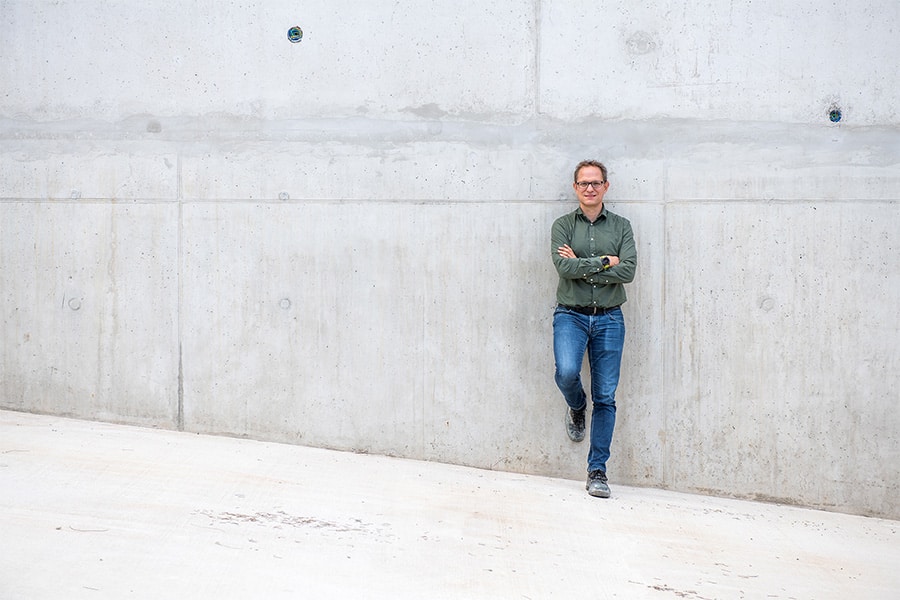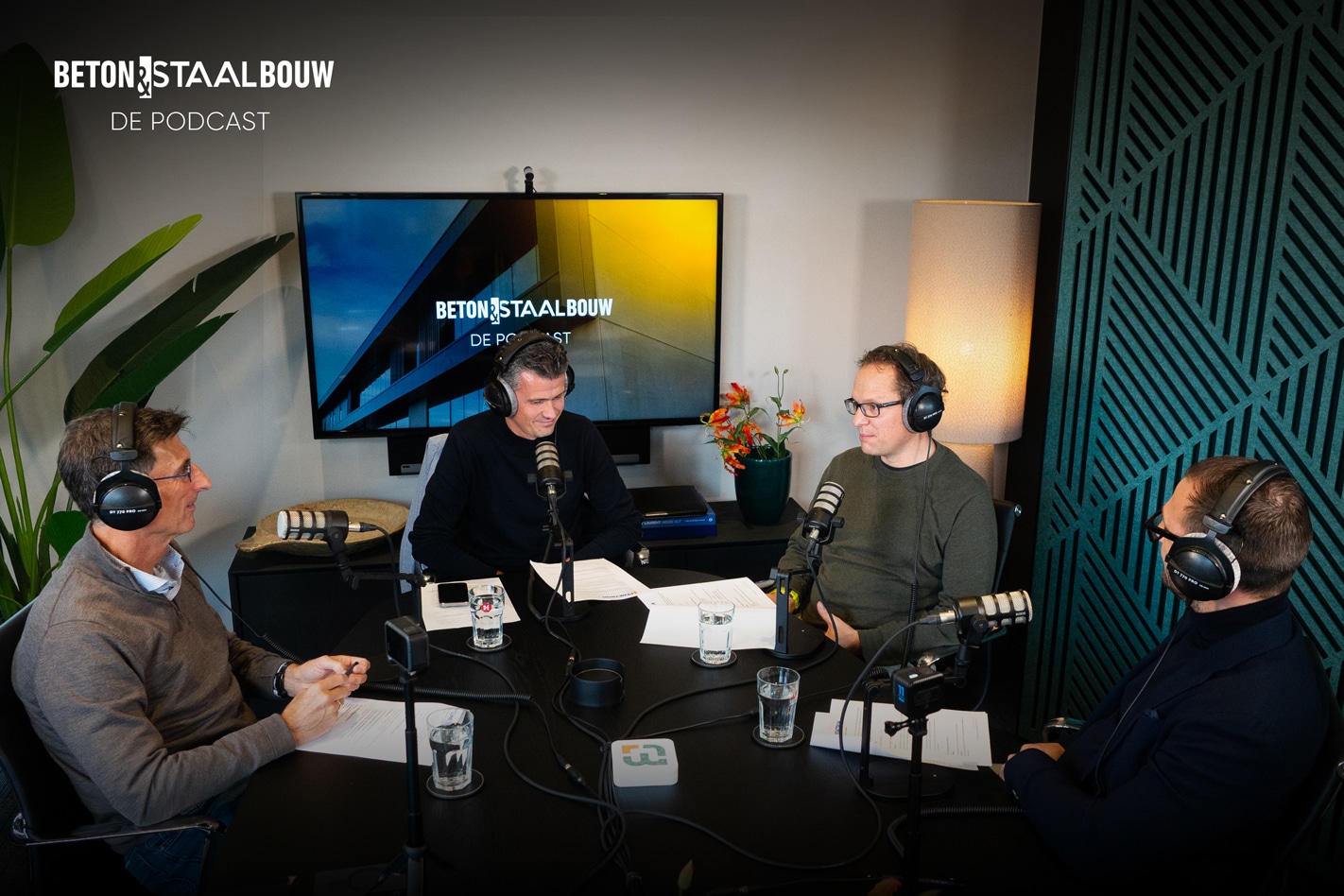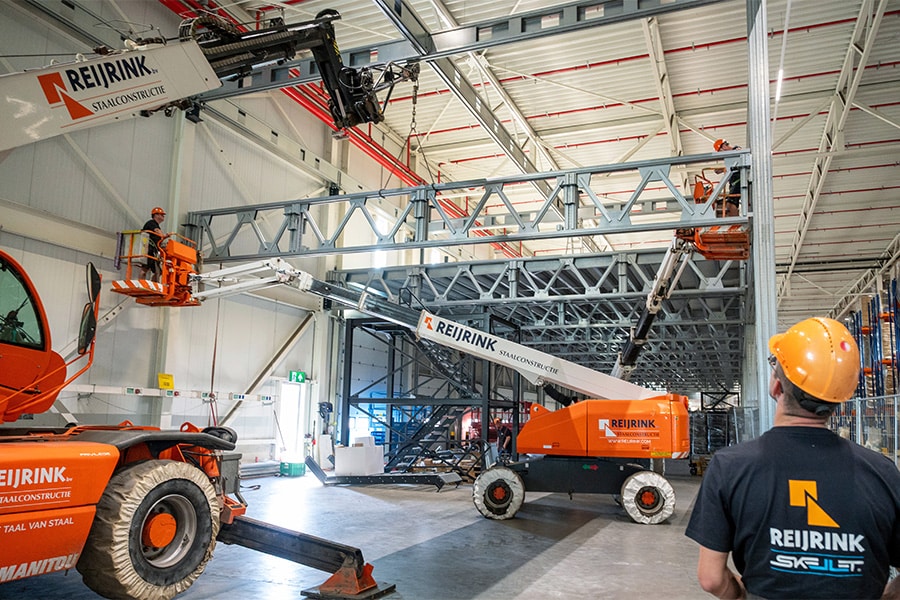
Time for sustainable action
Precast construction is at a crossroads
Precast concrete offers speed, efficiency and scalability: exactly what is needed to make the construction industry more sustainable. Yet the industry continues to cling to conventional cements such as CEM I when more sustainable alternatives are already available. The technology is there, the urgency is there, but the decisiveness is lacking. The precast industry is therefore at a crossroads: continue on the old path or opt for a future-proof approach.
The pressure comes from several sides: tightening regulations, stricter requirements in tenders and a growing social awareness. At the same time, prefab is eminently suitable for sustainability. Now is the time to accelerate, with proven and innovative technology, minimum effort and maximum impact.
Technology is not the problem
“We have gone from unconsciously wrong to consciously wrong. But that is not yet behavioral change,” says Niki Loonen, sustainable concrete consultant at TBI and active within the Concrete Accord. “Now we need to move to consciously good.” According to Loonen, the challenge lies not in the technology, but in the organization. Prefab offers a lot of potential, but requires adaptation of processes. “Our production processes are set up for rapid demoulding: pour in the morning, out of the mold in the afternoon. More durable concrete reacts more slowly, so that requires planning and curing.’ He sees cold feet as a major brake. ’New experiences are crucial to build confidence in new mixes and processes. Each producer has to re-experience that concrete with a different composition can deliver the same, or even better, quality.”

Practice: hybrid mixtures and heat
“If you're still pouring with pure Portland cement in 2030, you're just going to drop out for major projects,” says Ruud Out, concrete technologist at Voorbij Prefab. His organization developed a hybrid mixture with CEM III/A, granulated blast furnace slag and sodium sulfate. With this, up to 44% of CO2 reduction is achieved for elements stripped after 18 hours, with no concessions to strength or quality. “Heat is the simplest and biggest step precast companies can take,” Out states. By hardening in heated climate chambers and adding activators or accelerators, even slower-reacting cements can perform fast enough. “We limit the clinker proportion to about 25% and still achieve the desired formwork strength.”
He emphasizes that this approach has been extensively tested and certified. “Together with KIWA and Intron, we have substantiated the performance. This is necessary to create trust with clients and customers.”
Sustainability requires cooperation
According to Loonen, sustainability is a chain challenge. “Raw material producer, concrete producer, contractor, client, investor, regulator: everyone has a role.” He advocates more direction and guts from clients. “If as a client you don't accept an extra two weeks of construction time, you just get CEM I.” Out adds: “There are companies that don't have the knowledge in-house or don't dare to invest. But then you have to hire that knowledge.” Beyond Prefab actively shares knowledge and calls on the industry to collaborate. “We are quite open in what we do. Only the exact mixtures we don't share publicly, but in our collaboration we are transparent.”
Loonen is a lecturer at the Concrete Association, for courses focused on CO2 reduction and concrete sustainability. “But the government also plays a role. There are subsidies and WBSO schemes available for sustainability research,” Out says. “Ultimately, it's about the will, capacity and guts within the companies themselves.”
Innovation: from CEM III to ACT
In addition to CEM III/A and CEM III/B, there are innovative technologies such as ACT, developed by Ecocem. ACT combines extremely low clinker content with advanced admixtures and offers comparable CO2 reduction with less slag. This increases scalability and makes it suitable for acceleration in the chain. Ecocem plays an active role in this as a knowledge partner, developing technologies that can be directly applied within existing production processes, a crucial factor for affordable sustainability. “The sector has no time for complex transitions. What works within existing processes can already be applied tomorrow,” said Loonen.
Legislation forces change in steps
From 2030, stricter sustainability standards will be set from the EU that will give the cement sector fewer free emission rights through the EU Emission Trading System (ETS). The Concrete Accord has also recently tightened agreements, with clear targets for CO2 reduction and circularity. The precast sector can play a key role in this, provided people are willing to shift gears. “Once products become unaffordable due to the ETS, alternatives have a chance,” says Loonen. “Unfortunately, the cement industry is moving at the pace that ETS requires of them, not at the pace that is technically possible.”
KJ The Hague proves it can be done
Example projects such as the KJ The Hague show that CO2 reduction is feasible without concessions to quality or planning. In this high-rise project, a proven recipe 40% reduced CO2 emissions at 20,000 m³ of concrete, with predictable production and stable costs. “Precast is ideally suited for sustainability,” Out concludes. “The processes are controlled, repeatable, scalable and affordable. If we invest in knowledge and cooperation now, we can move toward net zero in as little as five years.”
Call to industry: time to act
The precast industry knows the alternatives. The move to sustainable production is technically feasible. What is missing is awareness and leadership. The call to manufacturers, clients and policy makers is clear: don't wait for regulations but take the lead. “The time for talking is over. We have to start doing,” says Loonen. “What you can already do without raising prices, do it right away.” Out concurs: “Start with heat, add accelerators, apply activators and work together. The technology is there, it is now up to us to apply it.”
Prefab is at a crossroads. The choice is up to the industry: stick with the old and produce less and less, or accelerate toward a sustainable future.
Heeft u vragen over dit artikel, project of product?
Neem dan rechtstreeks contact op met Ecocem.
 Contact opnemen
Contact opnemen


